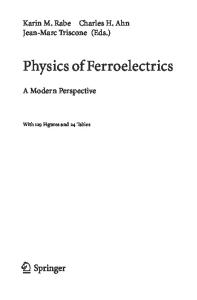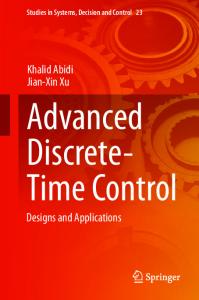Handbook of Modern Sensors Physics, Designs, and Applications
This book is about devices commonly called sensors. Digital systems, however complex and intelligent they might be, must receive information from the outside world that is generally analog and not electrical. Sensors are interface devices between various
- PDF / 16,047,218 Bytes
- 671 Pages / 439.37 x 666.142 pts Page_size
- 47 Downloads / 462 Views
.
Jacob Fraden
Handbook of Modern Sensors Physics, Designs, and Applications Fourth Edition
Jacob Fraden [email protected]
ISBN 978-1-4419-6465-6 e-ISBN 978-1-4419-6466-3 DOI 10.1007/978-1-4419-6466-3 Springer New York Heidelberg Dordrecht London Library of Congress Control Number: 2010932807 # Springer ScienceþBusiness Media, LLC 2010 All rights reserved. This work may not be translated or copied in whole or in part without the written permission of the publisher (Springer Science+Business Media, LLC, 233 Spring Street, New York, NY 10013, USA), except for brief excerpts in connection with reviews or scholarly analysis. Use in connection with any form of information storage and retrieval, electronic adaptation, computer software, or by similar or dissimilar methodology now known or hereafter developed is forbidden. The use in this publication of trade names, trademarks, service marks, and similar terms, even if they are not identified as such, is not to be taken as an expression of opinion as to whether or not they are subject to proprietary rights. Printed on acid-free paper Springer is part of Springer Science+Business Media (www.springer.com)
Preface
Since publication of the previous, the 3rd edition of this book, the sensor technologies have made a remarkable leap ahead. The sensitivity of the sensors became higher, the dimensions – smaller, the selectivity – better, and the prices – lower. What have not changed, are the fundamental principles of the sensor design. They still are governed by the laws of Nature. Arguably one of the greatest geniuses ever lived, Leonardo Da Vinci had his own peculiar way of praying. It went like this, “Oh Lord, thanks for Thou don’t violate Thy own laws.” It is comforting indeed that the laws of Nature do not change with time, it is just that our appreciation of them becomes refined. Thus, this new edition examines the same good old laws of Nature that form the foundation for designs of various sensors. This has not changed much since the previous editions. Yet, the sections that describe practical designs are revised substantially. Recent ideas and developments have been added, while obsolete and less important designs were dropped. This book is about devices commonly called sensors. The invention of a microprocessor has brought highly sophisticated instruments into our everyday life. Numerous computerized appliances, of which microprocessors are integral parts, wash clothes and prepare coffee, play music, guard homes, and control room temperature. Sensors are essential components in any device that uses a digital signal processor. The processor is a device that manipulates binary codes generally represented by electric signals. Yet, we live in an analog world, where such devices function among objects that are mostly not digital. Moreover, this world is generally not electrical (apart from the atomic level). Digital systems, however complex and intelligent they might be, must receive information from the outside world. Sensors are the interface devices between various
Data Loading...











